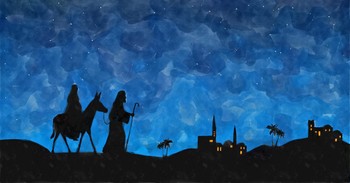Ours is an age of vaunted skepticism. In the face of massive scientific breakthroughs, many people in educated circles simply default to the assumption that God is an “unnecessary hypothesis.” While it’s true that our increasingly sophisticated scientific technologies and procedures are shedding more light on the operations of our universe, the notion that these explanations are explaining away the mystery underlying existence in the first place is entirely misplaced.
One of the delicious ironies of history is that the enlightenment—the breeding ground of radical skepticism—is also the site of God’s clearest expression of the wisdom of His created order. It’s almost as though our Lord granted, “Okay, skepticism’s ramping up. Let me show you something you didn’t know.” The world we’re glimpsing through the vantage point of our enlightenment tools is beyond our capacity to imagine. What are these tools? In broad strokes, we can think of these scientific tools as granting us views into two broad realms—namely, the microcosm and the macrocosm. The microcosm falls under the purview of the microscope and all of those instruments that allow us to peer into the formerly inaccessible regions of the microscopic realm. Conversely, the telescope grants us access to the vastness of our universe, bringing to light whole regions that were impossibly remote to us in former times. In these two realms, we’re confronted with the infinitesimally small and the inconceivably large.
A crude reading of all these breakthroughs is that they offer us a comprehensive material explanation of all that is. Setting aside the fact that such a claim neatly skirts the question of why there is anything at all (why is there something, rather than nothing?), such a claim also fails to reckon with the fact that all of this exploration, far from exhausting our understanding, only deepens our sense of mystery. In the ancient and indeed biblical sense, the mystery is something that exceeds our full understanding—not something that remains permanently inscrutable. We can gain insights into a mystery, but we can’t exhaust it. As we’ll see, our universe falls into this category.
What if we saw our scientific instruments as force multipliers of wonder rather than tools of reduction? What if we saw these many insights into the minuscule and the vast as forms of divine disclosure rather than discoveries that rule out the necessity of a creator? For the remainder of the article, I’d like to highlight some pertinent examples from the microcosm and the macrocosm.

How the Microscopic World Reflects the Mystery of God
The smaller we get, the more strange and abstract things begin to look. Indeed, even the most daring of non-representational artists would be hard-pressed to compete with some of the minuscule scenery we glimpse in the microcosm. Take, for example, the diatom. Microscopic algae with glass-like shells that make up pond scum, they are also marvels of elaborate design. If you look through some of the images, you’ll likely notice striking resemblances to some of the more famous architectural designs. One example I have in mind strongly resembles the world-famous Sydney Opera House. Another is a dead ringer for the Leaning Tower of Pisa. Why all of this extravagance—this gratuitous beauty, most of which will never be seen by human eyes? I’m put in mind of Proverbs 25:2: “It is the glory of God to conceal things, but the glory of kings is to search things out.”
Another example would be the humble snowflake. It’s a well-known fact that no two snowflakes are alike, but even a casual glance at their intricate designs inspires wonder. And if we try to spell this radical diversity out in terms of numbers, we have to use words like sextillion. Yes, we can speak in such terms and even represent them mathematically, but there’s simply no way to wrap our minds around such abundance. We cannot avoid the word mystery.
Psalm 8 and the Majesty of the Macrocosm Revealed
Conversely, the telescope has allowed us to travel to fantastically remote regions. One example of the immensity that confronts us in space would be the great red spot on Jupiter, our solar system’s largest planet. In fact, this spot is a colossal hurricane that’s been raging for over three hundred years, spinning in a counterclockwise fashion. Nearly three planet earths could fit inside this storm.
While examples could easily be multiplied, one of the clearest examples of the inconceivable scale that confronts us in our universe is the number of stars. Thanks to modern scientific advances, we now know that there are billions of stars in our galaxy. (The current estimate is 200-400 billion stars in our galaxy.) As mind-boggling as these figures are, astronomers and astrophysicists are now beginning to suppose that there are as many as two trillion galaxies—a figure that yields ten times more stars than all the grains of sand in the beaches and deserts of this world. Now recall Psalm 8, which describes the heavens as the work of God’s “fingers.” Once again, thanks to our scientific breakthroughs, we’re able to appreciate the profundity of this Psalm on a whole other level today. The discoveries of sciences are a precious gift to the church!
To behold the sheer immensity of our universe—its cosmic vastness—is to encounter a level of power, majesty, and creative exuberance that is unfathomable. Scientific exploration does not hollow out the world by giving us a reductionistic vision. Rather, it deepens the mystery, revealing riches upon riches that were formerly hidden.
Embracing the Wonder of Creation through Worship
Everything in the natural world, from a leaf to a speck of cosmic dust, is a “pointer,” gesturing toward the one who is Himself the wellspring of all creation. Indeed, everything in the created order “contains multitudes,” hidden realms, some impossibly small, others impossibly remote, that make clear that our world is deeply mysterious. To say that we cannot wrap our minds around the created order is not a recipe for intellectual sloth, but rather a humble admission that we are stewards of creation—not its masters. All that is to say, the proper response to all of this wonder is a posture of worship.
Photo Credit: ©Getty Images/gorodenkoff

Kenneth Boa equips people to love well (being), learn well (knowing), and live well (doing). He is a writer, teacher, speaker, and mentor and is the President of Reflections Ministries, The Museum of Created Beauty, and Trinity House Publishers.
Publications by Dr. Boa include Conformed to His Image, Handbook to Prayer, Handbook to Leadership, Faith Has Its Reasons, Rewriting Your Broken Story, Life in the Presence of God, Leverage, and Recalibrate Your Life.
Dr. Boa holds a B.S. from Case Institute of Technology, a Th.M. from Dallas Theological Seminary, a Ph.D. from New York University, and a D.Phil. from the University of Oxford in England.




